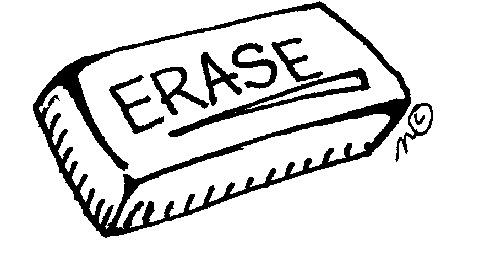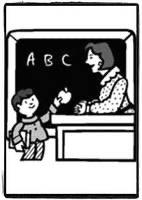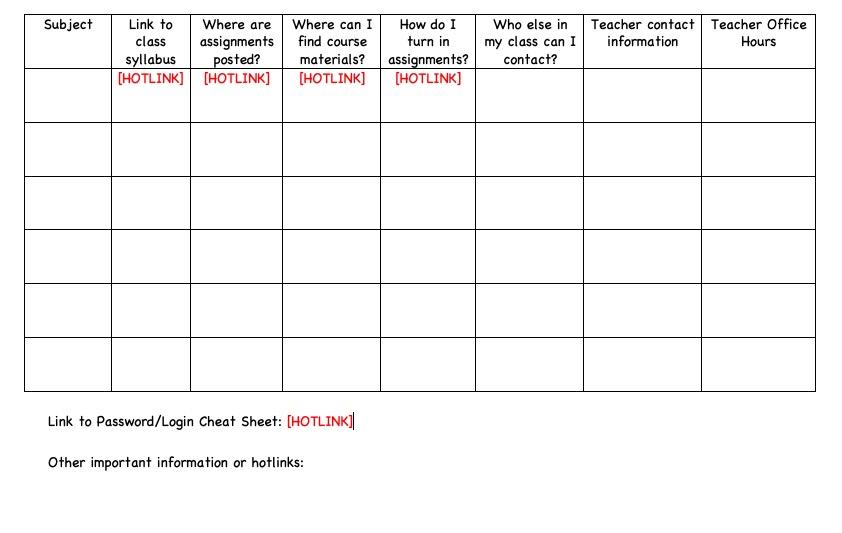2 DAY SKILLS PRACTICE INTENSIVE: STRENGTHENING EXECUTIVE SKILLS TO PROMOTE SCHOOL SUCCESS
MONDAY, MAY 15, 2023 – TUESDAY, MAY 16, 2023 | SASKATOON, SK
WORKSHOP DESCRIPTION

Executive skills are sometimes called “the hidden curriculum.” They are skills such as task initiation, sustained attention, working memory, planning, organization, and goal-directed persistence that are absolutely critical to school success, yet curriculum standards seldom if ever explicitly reference these skills. Neuroscientists now tell us that these skills take a minimum of 25 years to reach full maturation, and the course of that development is influenced by experience and exposure, by modeling, practice, and direct instruction. This workshop will provide participants with a framework for understanding these key skills, how they develop in diverse populations, and how to support executive skills by embedding them into classroom routines and lessons and by tailoring interventions to meet the needs of individual students and classrooms.
Dear Colleague,
Many students struggle in school, not because they have problems acquiring academic skills but because they struggle with a key set of skills that underlie academic performance in a fundamental way. I’m referring to executive skills. Executive skills are critical to the acquisition of academic skills, but, more importantly, they are the skills students need to get things done. They are brain-based skills such as task initiation, sustained attention, working memory, planning, organization, and goal-directed persistence that are absolutely critical to school success. Some students seem to acquire them naturally, but many students don’t.
This workshop, which offers intensive training in how to help these students, will provide a model for understanding what these skills are and how they develop. The primary focus of the workshop, though, will be to give participants the opportunity to practice an array of practical interventions that can be incorporated into the classroom or into clinical practice.
If you have attended one of my 1-day trainings, this workshop will allow you to extend your learning by practicing strategies and applying those strategies to your setting and the students you work with. You will walk away with an understanding of interventions that you will be able to use the day after the workshop ends! Hope you will join me at the two-day skills training workshop!
Peg Dawson

LEARNING OBJECTIVES
• To describe the brain processes involved in executive skill development both in typically developing children and those with executive dysfunction (such as ADHD).
• To identify how executive skills impact school performance and daily living.
• “Best practices” in assessing executive skills, including both formal and informal measures.
• To design interventions for improving executive skills in students,
including 1) how to make environmental modifications to support weak executive skills, 2) how to develop protocols for teaching executive skills by embedding them in daily routines and classroom lessons, and 3) how to design student-centered interventions targeted to specific problem situations and executive skill challenges.
• The critical features of a coaching method geared to improving school performance through supporting executive skill development.
Dr. Peg Dawson: In over 40 years of clinical practice, Dr. Peg Dawson has worked with thousands of children who struggle at home and in school. At the center of their struggles are often weak executive skills. Along with her colleague, Dr. Richard Guare, she has written numerous books on this topic for educators, mental health professionals, and parents, among them Smart but Scattered, Smart but Scattered Teens, Executive Skills in Children and Adolescents, and Coaching Students with Executive Skills Deficits. Peg is also a past president of the National Association of School Psychologists, and the International School Psychology Association, and is a recipient of NASP’s Lifetime Achievement Award.
208-197 Forester St, North Vancouver, BC V7H 0A6 t 604 924 0296 | tf 1 800 456 5424 | f 604 924 0239
Child & Youth Focused | 12 CEUs
LETTER FROM DR. PEG DAWSON
WE ARE PLEASED TO WELCOME YOU TO A JACK HIROSE & ASSOCIATES WORKSHOP.


If you have any questions or concerns throughout the day, please notify your on-site coordinator.
PLEASE REMEMBER TO:
ü Wear your name badge every day
ü Turn off your cell phone
ü Hand in your evaluation forms at the end of each day
SCHEDULE:
This schedule may vary depending on the flow of the presentation and participant questions
8:00am – 8:30am Sign-In – Refreshments Provided
8:30am – 10:30am Workshop Begins
10:30am – 10:45am Mid-Morning Break – Refreshments Provided 10:45am – 12:00pm Workshop in Session
12:00pm – 1:00pm Lunch Break - Not Provided
Sign-In - CPA Members Only
1:00pm – 2:30pm Workshop in Session
2:30pm – 2:45pm Mid-Afternoon Break – Refreshments Provided
2:45pm – 4:00pm Workshop in Session
4:00pm Hand-In Evaluation Forms
Sign-Out – CPA Members Only
CERTIFICATES:
• Certifcates are available for all particpants to download.
• To download a copy of your receipt or certificate, please visit: http://registration.jackhirose.com/certificates
• Certificates will be made available to download once the workshop has ended.
Are you a member of the Canadian Psychological Association (CPA), Canadian Counselling and Psychotherapy Association (CCPA) or the Vocational Rehabilitation Association of Canada (VRA)?
Please read the important CEU information below.
• Please request a form from the on-site coordinator. Forms need to be filled out and submitted directly to the association by the participant.
• For CPA Members Only:
- New Policy as mandated by the Canadian Psychological Association
- CPA Members must take their name badge in the morning, sign in after lunch and sign out at the end of the day.
- Early departure means CPA Members are no longer eligible to receive CPA credits
- Certificates will be updated with CPA credits when the forms are returned to our head office for verification (please allow 2 – 4 weeks). Updated certificates are available for download here: http://registration.jackhirose.com/certificates
208-197 Forester St, North Vancouver, BC, Canada V7H 0A6 t 604 924 0296 | tf 1 800 456 5424 | f 604 924 0239
Executive Skills Questionnaire
Peg Dawson & Richard Guare
Step I: Read each item below and then rate that item based on the extent to which you agree or disagree with how well it describes you. Use the rating scale below to choose the appropriate score. Then add the three scores in each section. Use the Key on page 2 to determine your executive skill strengths (2-3 highest scores) and weaknesses (2-3 lowest scores).
Item Your score
1. I don’t jump to conclusions
2. I think before I speak.
3. I don’t take action without having all the facts.
4. I have a good memory for facts, dates, and details.
YOUR TOTAL SCORE:
5. I am very good at remembering the things I have committed to do.
6. I seldom need reminders to complete tasks
YOUR TOTAL SCORE:
7. My emotions seldom get in the way when performing on the job.
8. Little things do not affect me emotionally or distract me from the task at hand.
9. I can defer my personal feelings until after a task has been completed
YOUR TOTAL SCORE:
10. No matter what the task, I believe in getting started as soon as possible.
11. Procrastination is usually not a problem for me.
12. I seldom leave tasks to the last minute
YOUR TOTAL SCORE:
13. I find it easy to stay focused on my work.
14. Once I start an assignment, I work diligently until it’s completed.
15. Even when interrupted, I find it easy to get back and complete the job at hand.
YOUR TOTAL SCORE:
16. When I plan out my day, I identify priorities and stick to them
17. When I have a lot to do, I can easily focus on the most important things
18. I typically break big tasks down into subtasks and timelines.
19. I am an organized person.
20. It is natural for me to keep my work area neat and organized.
21. I am good at maintaining systems for organizing my work.
YOUR TOTAL SCORE:
YOUR TOTAL SCORE:
1 dawson.peg@gmail.com
Strongly disagree 1 Tend to agree 5 Disagree 2 Agree 6 Tend to disagree 3 Strongly agree 7 Neutral 4
Item Your score
22. At the end of the day, I’ve usually finished what I set out to do.
23. I am good at estimating how long it takes to do something.
24. I am usually on time for appointments and activities.
25. I take unexpected events in stride.
26. I easily adjust to changes in plans and priorities.
27. I consider myself to be flexible and adaptive to change.
28. I routinely evaluate my performance and devise methods for personal improvement.
YOUR TOTAL SCORE:
YOUR TOTAL SCORE:
29. I am able to step back from a situation in order to make objective decisions.
30. I “read” situations well and can adjust my behavior based on the reactions of others.
YOUR TOTAL SCORE:
31. I think of myself as being driven to meet my goals.
32. I easily give up immediate pleasures to work on long-term goals.
33. I believe in setting and achieving high levels of performance.
YOUR TOTAL SCORE:
34. I enjoy working in a highly demanding, fast-paced environment.
35. A certain amount of pressure helps me to perform at my best.
36. Jobs that include a fair degree of unpredictability appeal to me.
YOUR TOTAL SCORE:
2 dawson.peg@gmail.com Strongly disagree 1 Tend to agree 5 Disagree 2 Agree 6 Tend to disagree 3 Strongly agree 7 Neutral 4
KEY Items Executive Skill Items Executive Skill 1 - 3 Response Inhibition 4 - 6 Working Memory 7 - 9 Emotional Control 10 - 12 Task Initiation 13 - 15 Sustained Attention 16 - 18 Planning/Prioritization 19 - 21 Organization 22 - 24 Time Management 25 - 27 Flexibility 28 - 30 Metacognition 31 - 33 Goal-Directed Persistence 34-36 Stress tolerance
Skills Weakest Skills
Strongest
Executive Skill Definitions
• Response Inhibition: The capacity to think before you act – this ability to resist the urge to say or do something allows us the time to evaluate a situation and how our behavior might impact it. In the young child, waiting for a short period without being disruptive is an example of response inhibition while in the adolescent it would be demonstrated by accepting a referee’s call without an argument.
• Working Memory: The ability to hold information in memory while performing complex tasks. It incorporates the ability to draw on past learning or experience to apply to the situation at hand or to project into the future. A young child, for example can hold in mind and follow 1-2 step directions while the middle school child can remember the expectations of multiple teachers.
• Emotional Control: The ability to manage emotions in order to achieve goals, complete tasks, or control and direct behavior. A young child with this skill is able to recover from a disappointment in a short time. A teenager is able to manage the anxiety of a game or test and still perform.
• Flexibility: The ability to revise plans in the face of obstacles, setbacks, new information or mistakes. It relates to an adaptability to changing conditions. A young child can adjust to a change in plans without major distress. A high school student can accept an alternative such as a different job when the first choice is not available.
• Sustained Attention: The capacity to maintain attention to a situation or task in spite of distractibility, fatigue, or boredom. Completing a 5-minute chore with occasional supervision is an example of sustained attention in the younger child. The teenager is able to attend to homework, with short breaks, for one to two hours.
• Task Initiation: The ability to begin projects without undue procrastination, in an efficient or timely fashion. A young child is able to start a chore or assignment right after instructions are given. A high school student does not wait until the last minute to begin a project.
• Planning/Prioritization: The ability to create a roadmap to reach a goal or to complete a task. It also involves being able to make decisions about what’s important to focus on and what’s not important. A young child, with coaching, can think of options to settle a peer conflict. A teenager can formulate a plan to get a job.
• Organization: The ability to create and maintain systems to keep track of information or materials. A young child can, with a reminder, put toys in a designated place. An adolescent can organize and locate sports equipment.
• Time Management: The capacity to estimate how much time one has, how to allocate it, and how to stay within time limits and deadlines. It also involves a sense that time is important. A young child can complete a short job within a time limit set by an adult. A high school student can establish a schedule to meet task deadlines.
• Goal-directed persistence: The capacity to have a goal, follow through to the completion of the goal, and not be put off by or distracted by competing interests. A first grader can complete a job in order to get to recess. A teenager can earn and save money over time to buy something of importance.
• Metacognition: The ability to stand back and take a birds-eye view of oneself in a situation. It is an ability to observe how you problem solve. It also includes self-monitoring and self-evaluative skills (e.g., asking yourself, “How am I doing? or How did I do?”). A young child can change behavior is response to feedback from an adult. A teenager can monitor and critique her performance and improve it by observing others who are more skilled.
• Stress Tolerance: the ability to thrive in stressful situations and to cope with uncertainty, change, and performance demands. We generally reserve our discussion of this skill to adults, since it seems more relevant with this population. We find it helps people understand the kind of work environment they do best in.
3 dawson.peg@gmail.com
EXECUTIVE SKILL POSITIVE EXAMPLE NEGATIVE EXAMPLE
RESPONSE INHIBITION
WORKING MEMORY
EMOTIONAL CONTROL
FLEXIBILITY
SUSTAINED ATTENTION
TASK INITIATION
PLANNING/PRIORITIZING
ORGANIZATION
TIME MANAGEMENT
GOAL-DIRECTED PERSISTENCE
METACOGNITION
4 dawson.peg@gmail.com
PLANNING SHEET FOR DESIGNING STRATEGIES TO OVERCOME EXECUTIVE SKILL OBSTACLES
Directions:
1. Describe the lesson being taught.
2. Identify the executive skills the lesson requires students to use.
3. Identify potential obstacles that might prevent the student from using those skills effectively.
4. With the student, decide on a strategy to use to overcome the obstacle.
Lesson/Assignment Executive Skill(s) Obstacle
Possible Strategies
6 dawson.peg@gmail.com
Classroom Routine Planning Form
Identify a classroom routine that would address a classroom or student problem, incorporates 1 or more executive skills, and that would take no more than 5-10 minutes a day or no more than 15 minutes once a week to implement. Elementary and secondary examples have been provided.
Elementary Example
Goal Behavior Executive Skill(s) Routine
time required Smooth transition from classroom to cafeteria Response inhibition Emotional control Students maintain personal space and use quiet voices in the corridor
Steps in the Routine:
1. Talk with class about going from the classroom to the cafeteria; ask what a “bumpy” transition looks like; then ask what a “smooth” transition looks like. Ask students which is better and talk about why a smooth transition is better.
2. Referring to classroom posters of individual executive skills, ask students which executive skills are needed for a smooth transition.
3. With the class, make a list of steps for getting ready for lunch (e.g., hand in completed work; clear desk surface; get lunch box if applicable; when instructed, line up in orderly fashion; walk to cafeteria keeping appropriate distance from others in line and talking with “indoor voices.”)
4. Post the routine and review the steps for several days.
5. Prompt kids to begin the routine.
6. Announce each step.
7. Debrief with students after lunch to assess how it went for several days.
8. Assign a student to announce the routine.
9. Fade the prompts.
Secondary Example
Steps in the Routine
1. Begin with a discussion about the challenges of handing in homework at the end of class. Ask students why they’re neglecting to do this.
2. Referring to classroom posters of individual executive skills, ask students which executive skills are needed to do this successfully.
3. Solicit from students possible solutions to the problem. One solution might be:
a. At the end of class on days homework has been assigned, teacher will stand by door to accept completed homework.
b. If students don’t have the assignment, they will be asked to go to the end of the line and come up with a plan for how/when they will get the homework to the teacher.
c. After a week, debrief with students to determine how the routine is working and to tweak the routine if needed.
d. Optional: ask the class to set a class goal (% of students handing in homework on time) and come up with an activity reward for reaching the goal.
7 dawson.peg@gmail.com
Est.
3 minutes
Problem situation Executive Skill(s) Routine Est. time required Students forgetting to hand in homework Working memory Stand by door at end of class and accept completed homework. 3-5 minutes
8 dawson.peg@gmail.com
Executive Skill(s) Routine Est. time required Routine steps: 1. 2. 3. 4. 5. 6. 7. 8. 9. 10.
Goal Behavior or Problem Situation
Student Strengths: Identify a few of the student’s strengths or positive traits, particularly noting any executive skill strengths the student may have.
Problem Description: Which problem behavior should be targeted?
Executive Skill(s): What skills do you think might be involved?
Setting: Where, when, or under what circumstances does the behavior usually occur? All day long in every setting
Where to Start If you could select one setting or activity or change one small part of the student’s behavior that would lead you to say, “This is better,” what would that be?
Possible Strategies student might use. Think about environmental modifications, cues, visual imagery, checklists, smart phone apps, self-talk, mental rehearsal, etc.
Examples of environmental modifications:
• Change physical or social environment (e.g., add physical barriers, reduce distractions, provide organizational structures, visual cues, etc.)
• Modify the task (e.g., make shorter, build in breaks, give something to look forward to, create a schedule, build in choice, make the task more fun, etc.)
• Change the way adults interact with the student (e.g., rehearsal, prompts, reminders, coaching, praise, debriefing, feedback)
Possible Motivator What would help the student be more likely to try? Can you use a simple reward system? Alternate between preferred and non-preferred activities? Have student identify something to look forward to doing when the task (or a piece of the task) is done
Other ideas?
Visual to Show Progress—What visual feedback can you give the student so he/she can clearly see that progress is being made? Graph? Checklist? Behavior counts? Tracking grades on tests? Other ideas?
Intervention Planning Form
10 dawson.peg@gmail.com
Intervention Planning Form
Math seatwork
Student Strengths: Identify a few of the student’s strengths or positive traits, particularly noting any executive skill strengths the student may have.
Problem Description: Which problem behavior should be targeted?
Executive Skill(s): What skills do you think might be involved?
Setting: Where, when, or under what circumstances does the behavior usually occur?
Where to Start If you could select one setting or activity or change one small part of the student’s behavior that would lead you to say, “This is better,” what would that be?
Possible Strategies student might use. Think about environmental modifications, cues, visual imagery, checklists, smart phone apps, self-talk, mental rehearsal, etc.
Examples of environmental modifications:
• Change physical or social environment (e.g., add physical barriers, reduce distractions, provide organizational structures, visual cues, etc.)
• Modify the task (e.g., make shorter, build in breaks, give something to look forward to, create a schedule, build in choice, make the task more fun, etc.)
• Change the way adults interact with the student (e.g., rehearsal, prompts, reminders, coaching, praise, debriefing, feedback)
Possible Motivator What would help the student more likely to try? Can you use a simple reward system? Alternate between preferred and non-preferred activities? Have student identify something to look forward to doing when the task (or a piece of the task) is done Other ideas?
Visual to Show Progress—What visual feedback can you give the student so he/she can clearly see that progress is being made? Graph? Checklist? Behavior counts? Tracking grades on tests? Other ideas?
11 dawson.peg@gmail.com
Intervention Planning Form
Student Strengths: Identify a few of the student’s strengths or positive traits, particularly noting any executive skill strengths the student may have.
Problem Description: Which problem behavior should be targeted?
Executive Skill(s): What skills do you think might be involved?
Setting: Where, when, or under what circumstances does the behavior usually occur?
Where to Start If you could select one setting or activity or change one small part of the student’s behavior that would lead you to say, “This is better,” what would that be?
Possible Strategies student might use. Think about environmental modifications, cues, visual imagery, checklists, smart phone apps, self-talk, mental rehearsal, etc.
Examples of environmental modifications:
• Change physical or social environment (e.g., add physical barriers, reduce distractions, provide organizational structures, visual cues, etc.)
• Modify the task (e.g., make shorter, build in breaks, give something to look forward to, create a schedule, build in choice, make the task more fun, etc.)
• Change the way adults interact with the student (e.g., rehearsal, prompts, reminders, coaching, praise, debriefing, feedback)
Possible Motivator What would help the student be more likely to try? Can you use a simple reward system? Alternate between preferred and non-preferred activities? Have student identify something to look forward to doing when the task (or a piece of the task) is done
Other ideas?
Visual to Show Progress—What visual feedback can you give the student so he/she can clearly see that progress is being made? Graph?
Checklist? Behavior counts? Tracking grades on tests? Other ideas?
12 dawson.peg@gmail.com
References
Research articles
Barker, J.E., Semenov, A.D., Michaelson, L., Provan, L.S., Snyder, H.R., & Munakato, Y. (2014). Less-structured time in children’s daily lives predicts self-directed executive functioning. Frontiers in Psychology,. http:// doi: 10.3389/fpsyg.2014.00593.
Bennike, I.H., Wieghorst, A. & Kirk U. J. (2017). Online-based mindfulness training reduces behavioral markers of mind wandering. Journal of Cognitive Enhancement doi:10.1007/s41465-017-0020-9.
Duckworth, A.L. & Yeager, D.S. (2015). Measurement matters: Assessing personal qualities other than cognitive ability for educational purposes. Educational Researcher, 44 (4), 237–251. DOI: 10.3102/0013189X1558432.
Embry, D. D. & Biglan, A. (2008). Evidence-based kernels: Fundamental Units of Behavioral Influence. Clinical Child and Family Psychology Review, 11(3), 75-113.
Fallon, L. M., Collier-Meek, M. A., Maggin, D. M., Sanetti, L. M. H., & Johnson, A. J. (2015). Is performance feedback an evidence-based practice? A systematic review and evaluation. Exceptional Children, 81, 227–246.
Halin, N., Marsh, J.E., Hellman, A., Hellstrom, I., Sorqvist, P. (2014). A shield against distraction. Journal of Applied Research in Memory and Cognition, 3, 31–36.
Horner, R. H., Carr, E. G., Halle, J., McGee, G., Odom, S., & Wolery, M. (2005). The use of single-subject research to identify evidence-based practice in special education. Exceptional Children, 71, 165–179.
Jacobson, L. A., Williford, A. P., & Pianta, R. C. (2011). The role of executive function in children’s competent adjustment to middle school. Child Neuropsychology, 17, 255-208.
Martin, A. J. (2013). Improving the achievement, motivation, and engagement of students with ADHD: The role of Personal Best Goals and other growth-based approaches. Australian Journal of Guidance and Counseling, 23(1), 143-155.
Morgan, P.L., Farkas, G., Wang, Y., Hillemeier, M.M., Oh, Y., Maczuga, S. (2019). Executive function deficits in kindergarten predict repeated academic difficulties across elementary school. Early Childhood Research Quarterly, 46 (1), 20-32.
Palminteri S, Kilford EJ, Coricelli G, Blakemore S-J (2016). The computational development of reinforcement learning during adolescence. PLoS Computational Biology, 12(6): e1004953. doi:10.1371/journal.pcbi.1004953.
Rowe, D. A., Mazzotti, V. L., & Sinclair, J. (2015). Strategies for teaching self-determination skills in conjunction with the common core. Intervention in School and Clinic, 50, 131141. doi:10.1177/1053451214542043
Sarrasin, J.B., Nenciovici, L., Foisy, L.B., Allaire-Duqette, G., Riopel, M. & Masson, S. (2018). Effects of teaching the concept of neuroplasticity to induce a growth mindset on motivation, achievement, and brain activity: A meta-analysis. Trends in Neuroscience and Education, 12, 22–31.
Zelazo, P.D., Blair, C.B., and Willoughby, M.T. (2016). Executive Function: Implications for Education (NCER 20172000) Washington, DC: National Center for Education Research, Institute of Education Sciences, U.S. Department of Education
Books on Executive Skills
Anderson, V.A., Jacobs, P., & Anderson, P. (Eds.). (2008). Executive functions and the frontal lobes: A lifespan perspective. New York: Taylor & Francis.
Cooper-Kahn, J. & Foster, M. (2013). Boosting executive skills in the classroom: A practical guide for educators. San Francisco: Jossey-Bass.
Cooper-Kahn, J. & Foster, M. (2013). Late, lost, and unprepared. Bethesda, MD: Woodbine House.
Guare, R., Guare, C., & Dawson, P. Smart but scattered and stalled. New York: The Guilford Press.
Dawson, P. & Guare, R. (2018). Executive skills in children and adolescents: A practical guide to assessment and intervention. 3rd Edition. New York: The Guilford Press.
13 dawson.peg@gmail.com
Dawson, P. & Guare, R. (2012). Coaching students with executive skills deficits. New York: The Guilford Press.
Dawson, P. & Guare, R. (2009). Smart but scattered: The revolutionary ”executive skills" approach to helping kids reach their potential. New York: The Guilford Press.
Guare, R., Dawson, P., & Guare, C. (2012). Smart but scattered teens. New York: The Guilford Press
Immordino-Yang, M.H. (2016). Emotions, learning, and the brain: Exploring the educational implications of affective neuroscience. New York: W.W. Norton & Company, Inc.
Kaufman, C. (2010). Executive functions in the classroom. Baltimore, MD: Paul H. Brookes
Meltzer, L. (2010). Promoting executive function in the classroom
McCloskey, G., Perkins, L. A., & Van Divner, B. (2009). Assessment and intervention for executive function difficulties. New York: Taylor & Francis Group
Resources for Educators
Bodrova, E. & Leong, D. J. (2007). Tools of the mind: The Vygotskian approach to early childhood education. Upper Saddle River, NJ: Pearson.
Cartwright, K. (2015). Executive skills and reading comprehension. New York: The Guilford Press.
Grove, T., Glasser, H., & Block, M. L. (2007). The inner wealth initiative. Tucson AZ: Nurtured Heart Publications. Harris, K. R., Graham, S., Mason, L. H., & Friedlander, B. (2008). Powerful writing strategies for all students. Baltimore: Paul H. Brookes.
Herman, K. C., Reinke, W. M., Frey, A. J., & Shepard, St. A. (2014). Motivational interviewing in schools: Strategies for engaging parents, teachers, and students. New York: Springer
McGlauflin, H. (2018). Calm and Alert. Eau Claire, WI: PESI.
Trudeau, E. (2021). Brilliantly dyslexic. (self-published but available through amazon).
Winter, N. (2022). Brilliant strengths: A strength-based program designed to raise self-esetem and lower anxiety in students with dyslexia. Trudeau, E. (self-published but available through amazon).
Resources for Therapists
Feigel, T. (2007). The pocket coach for parents. Edina, MN: Beaver’s Pond Press.
Glasser, H. & Easely, J. (1999). Transforming the difficult child. Tucson, AZ: Nurtured Heart Pubs.
Huebner, D. (2007). What to do when you grumble too much. Washington, D.C.: Magination Press. Other books by the same author: What to do when you worry too much, What to do when your brain gets stuck, What to do when your temper flares.
North, R. (2017). Motivational interviewing for school counselors. (self-published but available through amazon). Sibley, Margaret H. (2016). Parent-Teen Therapy for Executive Function Deficits and ADHD. New York: The Guilford Press.
Wilson, E & Lyons, L. (2013). Anxious kids, anxious parents: 7 ways to stop the worry cycle and raise courageous and independent children. Deerfield Beach, FL: Health Communications, Inc.
Autism Spectrum Disorder Materials
Buron, K. D. & Curtis, M. B. (2012). The incredible 5-point scale, 2nd Edition. Shawnee Mission, KS: Autism Asperger Publishing Company.
Cannon. L., Kenworthy, L., Alexander, K., Wernere, M., & Anthony, L. Unstuck and on Target: An executive function curriculum to improve flexibility, planning, and organization. (2018). Baltimore: Paul H. Brookes. Kenworthy, L., Anthony, L.G., Alexander, K. C., Werner, M. A., Cannon, L., & Greenman, L. (2014). Solving executive function challenges. Baltimore: Paul H. Brookes.
McClannahan, L. E. & Krantz, P. J. (2010). Activity schedules for children with autism: Teaching independent behavior. Bethesda, MD: Woodbine House.
14 dawson.peg@gmail.com
Miscellaneous
Coyle, D. (2009). The talent code. New York: Bantam Books
Delman, M. (2018). Your Kid’s Gonna Be Okay. Boston: Beyond Book Smart
Dweck, C. (2006). Mindset: The New Psychology of Success. New York: Ballentine Books
Gawande, A. (2009). The Checklist Manifesto. New York: Metropolitan Books
Maurer, R. (2014). One Small Step Can Change Your Life: The Kaizen Way. New York: Workman Publishing
Nigg, J. T. (2017). Getting ahead of ADHD. New York: The Guilford Press
Snell, E. & Kabat-Zinn, M. (2013). Sitting still like a frog. Boston, MA: Shambhala Publications, Inc.
Resources for Developing Class Lessons on Executive Skills
Deak, J. & Ackerley, S. (2010). Your fantastic elastic brain. Naperville, IL: Little Pickle Press.
Feinstein, S. G. (2009). Secrets of the teenage brain.
Hanson, S. (2013). The executive function workbook for teens. Oakland CA: New Harbinger Press.
Kulman, R. (2011). Train your brain for success: A teenager’s guide to executive functions. Plantation FL: Specialty Press.
Kruger, S. (2013). SOAR study skills: A simple and efficient system for earning better grades in less time. Grand Blanc, MI: Grand Lighthouse Publishing
Langberg, J. (2011). Homework, Organization, and Planning (HOPS) Skills. Bethesda, MD: National Association of School Psychologists
McCloskey, L. & McCloskey, G. (2021). The day Frankie left his frontal lobes at home. Building Better Brains Publishing.
Moss, S. & Schwartz, L. (2007). Where’s my stuff: The ultimate teen organizing guide. San Francisco, CA: Zest Books.
Mullin, M. & Fried, K. (2013). Executive functioning workbook. K&M Center. Santa Monica: CA.
Smith, Bryan. (2016). What were you thinking? Boys Town NE: Boys Town Press. [NOTE: Bryan Smith has a whole series of books for children addressing many executive skills.]
Steinberg, L. (2014). The age of opportunity: Lessons from the new science of adolescence. Boston: Houghton Mifflin Harcourt.
Helpful Websites
http://smartbutscatteredkids.com
http://www.efintheclassroom.net
https://www.youtube.com/channel/UCvePPJz4o_6
Dg5qTzOqcVPg (YouTube Channel: Teenchangers)
http://efs2therescue.ca
http://activatedlearning.org
http://learningworksforkids.com
http://www.toolsofthemind.org
https://www.gonoodle.com
http://www.unstuckontarget.com
http://www.pbs.org/wgbh/pages/frontline/shows/t eenbrain/view/
http://developingchild.harvard.edu
http://www.brainfacts.org
http://www.dana.org
https://casel.org/resources
https://www.pbisworld.com
15 dawson.peg@gmail.com
Peg Dawson, Ed.D., NCSP
Choose one of your executive skill strengths (higher score). Talk about how that helps you do your job.
Choose one of your executive skill challenges (lower score). Talk about how that affects your work.

4/27/23 1 ADD TITLE
dawson.peg@gmail.com https://www.smartbutscatteredkids.com Complete the Executive Skills Questionnaire ACTIVITY
3 Key Concepts about Executive Skills
What they are: brain-based skills that take a minimum of 25 years to reach full maturation.
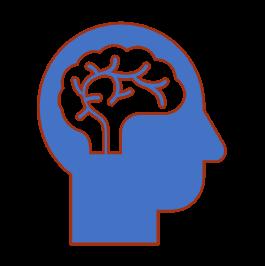
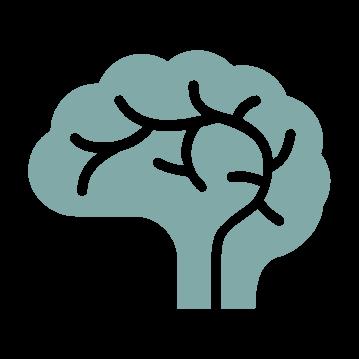
Until these skills are fully mature, it’s the job of parents and teachers (and adults who work with kids) to act as surrogate frontal lobes.
§ It is also the job of parents, teachers, etc. to ensure that kids grow their own executive skills.
An interesting take on child development…
https://www.nytimes.com/2021/04/16/opin
ion/ezra - klein - podcast - alisongopnik.html?referringSource=articleShare
Alison Gopnik runs the Cognitive Development and Learning Lab at UC Berkeley and is in both the philosophy and the psychology departments and is part of the A.I. working group.
Food for thought…from Alison Gopnik
I think a really deep idea that comes out of computer science originally in fact, came out of the original design of the computer is this idea of the explore or exploit trade-off is what they call it. So if you’re thinking about intelligence, there’s a real genuine tradeoff between your ability to explore as many options as you can versus your ability to quickly, efficiently commit to a particular option and implement it. And it turns out that even if you just do the math, it’s really impossible to get a system that optimizes both of those things at the same time, that is exploring and exploiting simultaneously because they’re really deeply in tension with one another.
4/27/23 3
Food for thought…from Alison Gopnik
So you’ve got one creature that’s really designed to explore, to learn, to change. That’s the child form. And then you’ve got this other creature that’s really designed to exploit, as computer scientists say, to go out, find resources, make plans, make things happen…And the idea is that those two different developmental and evolutionary agendas come with really different kinds of cognition, really different kinds of computation, really different kinds of brains, and I think with very different kinds of experiences of the world.
Food for thought…from Alison Gopnik
So what you’ll see when you look at a chart of synaptic development, for instance, is, you’ve got this early period when many, many, many new connections are being made. And then you’ve got this later period where the connections that are used a lot that are working well, they get maintained, they get strengthened, they get to be more efficient. And then the ones that aren’t are pruned, as neuroscientists say. They kind of disappear. The consequence of that is that you have this young brain that has a lot of what neuroscientists call plasticity. It can change really easily, essentially. But it’s not very good at putting on its jacket and getting into preschool in the morning.
How has the pandemic affected executive skills?
Two negative consequences:
1. Teachers build in a natural progression of gradually reducing supports (scaffolding) for executive skills, so that each grade level expects just a bit more from students. The pandemic disrupted that process. (think of a ladder with missing rungs).

2. Because of the disruptions caused by the pandemic, students also had 2 years of practicing bad habits (procrastination, impulsivity, short fuses). It’s hard to tear down those neural circuits!

4/27/23 4
Executive Skills that Underlie School Success
Strategies for Specific Executive Skill Challenges
Response inhibition
The capacity to think before you act – this ability to resist the urge to say or do something allows us the time to evaluate a situation and how our behavior might impact it.
https://www.youtube.com/watch?v=9PnbKL3wuH4

4/27/23 5
Foundational Skills § Response Inhibition Working Memory Emotional Control § Flexibility Sustained Attention § Task Initiation Advanced Skills § Planning/Prioritizing Organization § Time Management § Goal- Directed Persistence Metacognition
Working Memory
The ability to hold information in memory while performing complex tasks. It incorporates the ability to draw on past learning or experience to apply to the situation at hand or to project into the future.

Limits of Working Memory
Working memory has a capacity of about four chunks in young adults (and fewer in children and old adults).
~Cowen, N. (2005). Working Memory Capacity.
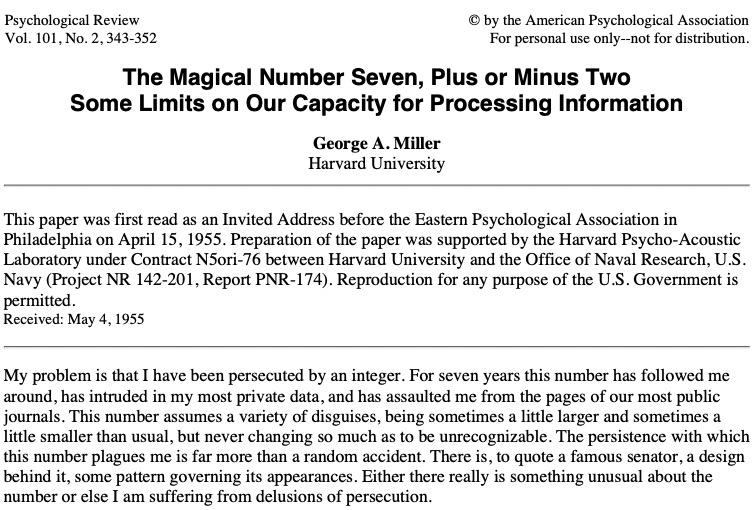
4/27/23 6
Say your phone number backwards. That’s do-able, right?

Now let’s make it a little harder: With the forward sequence of your phone number, add 1 to the first number, 2 to the second number, three to the third number. Keep the sequence going for 10 numbers how far can you get before you lose track and have to regroup?
Teachers ask: What can we do to increase working memory?
Psychologists offer 2 strategies:
§ Strategy #1: Wait
§ Strategy #2: Nothing
“There is no workout regime that students can undertake, no diet they can follow, and no computer games they can play. WM develops on its own schedule, and at least so far we don’t know how to create artificial improvement.”
Watson, A. C. (2017). Learning Begins: The Science of Working Memory and Attention for the Classroom Teacher.
Working Memory
§ Do NOT rely on verbal instructions only pair verbal instructions with visual cues whenever possible
§ Talk with students about the strategies they use to remember things (explain offloading)
When you do use verbal instructions, ask a random student to repeat the instructions cue students to write down their own reminders if they think they won’t remember
4/27/23 7
Supports for students with weak working memory
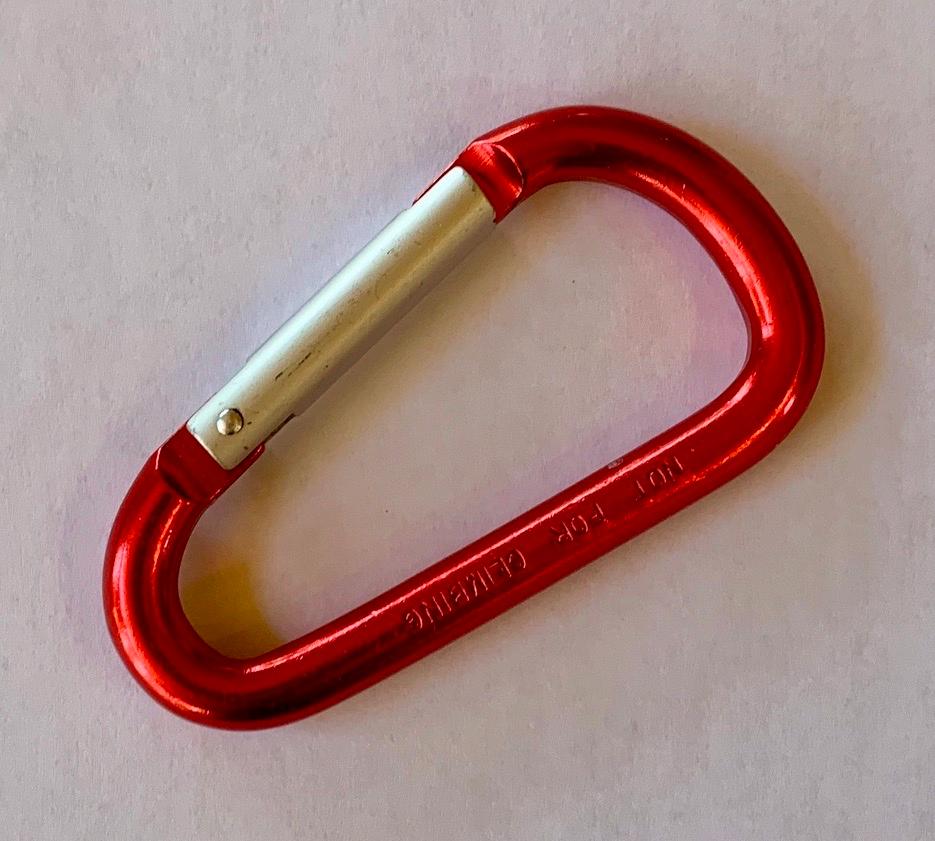

Emotional Control
The ability to manage emotions in order to achieve goals, complete tasks, or control and direct behavior.

Ask Kids What They’re Feeling (or identify their feelings for them)

4/27/23 8
Consider this...
Marin encounters frequent homework challenges, particularly with math. She often forgets the instructions and gets angry when her mother suggests a process that doesn’t match the one she was taught at school.
§ What executive skills might be challenging for Marin?
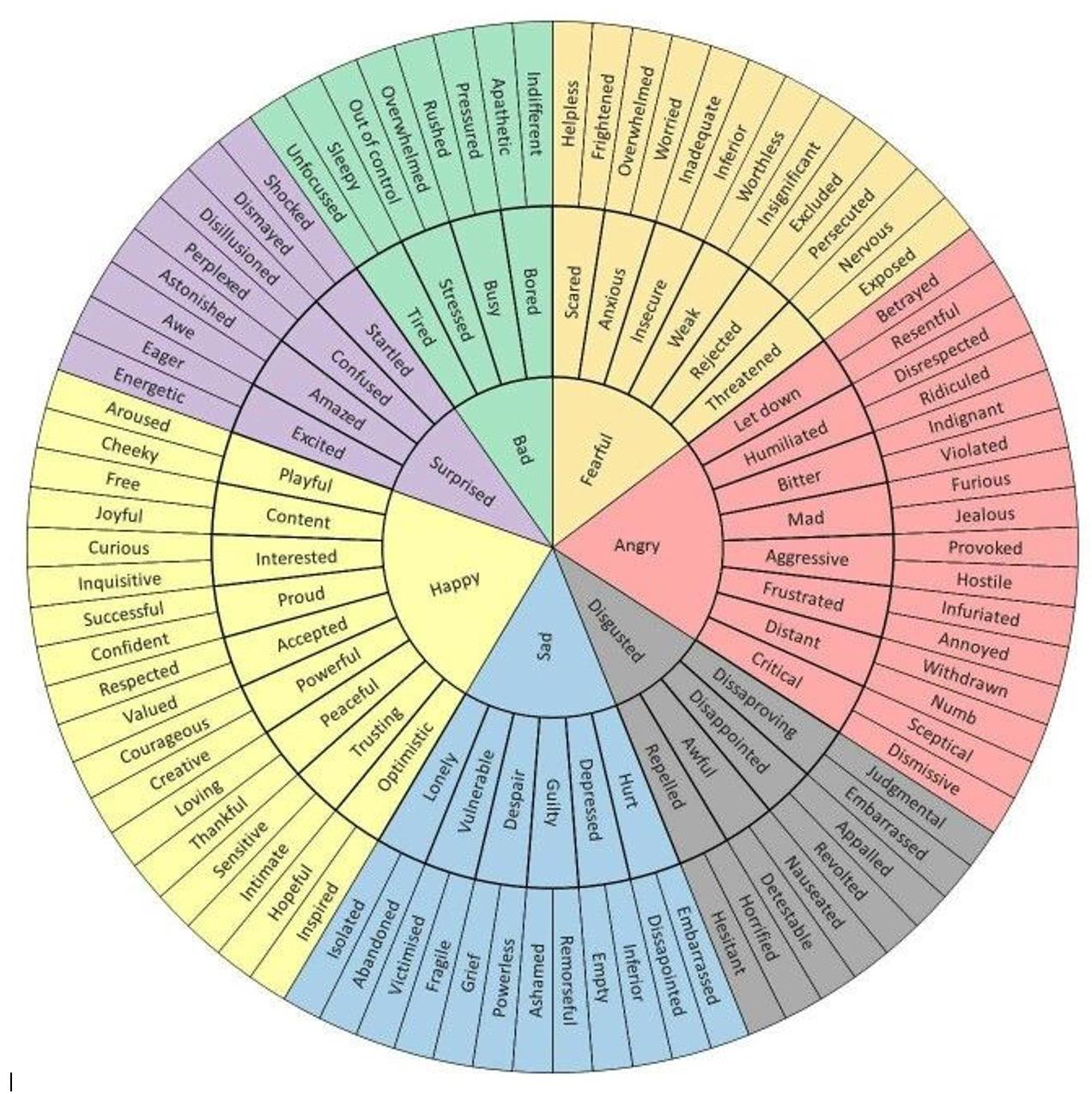
§ If you were working with Marin, what suggestions might you make to her mother or teacher?
Flexibility
The ability to revise plans in the face of obstacles, setbacks, new information or mistakes. It relates to an adaptability to changing conditions.

4/27/23 9
Sustained Attention
The capacity to maintain attention to a situation or task in spite of distractibility, fatigue, or boredom.




Sustained Attention
Movement breaks
4/27/23 10
Stamping Station
Sustained Attention
Movement breaks
§ Ask students to set incremental goals
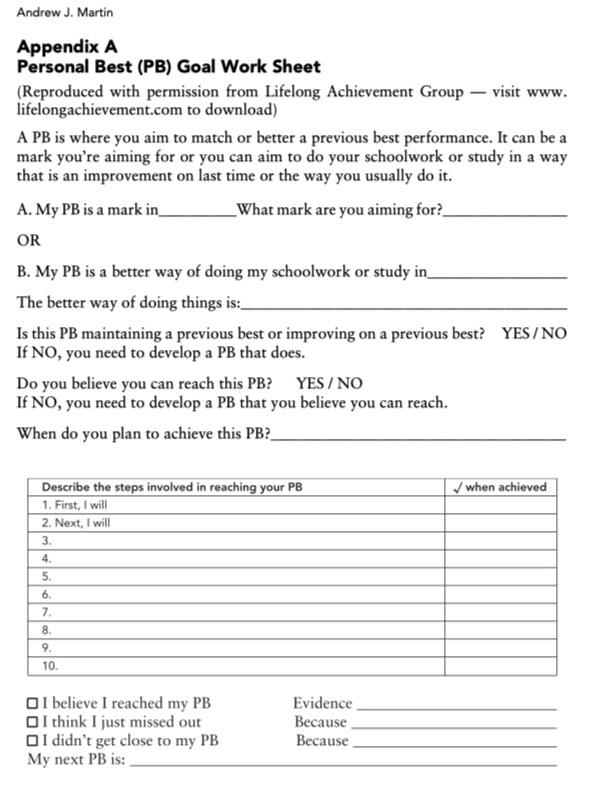
Australia Journal of Guidance and Counseling, 2013

Sustained Attention
Movement breaks
Ask students to set incremental goals
§ Talk to students about the strategies they use to help them screen out distractions or stick with tasks long enough to get them done
§ Teach students to monitor whether they’re paying attention
4/27/23 11
Teach kids how to pay attention
3 PHASES: Plan BEFORE beginning the task Monitor DURING the task Reflect AFTER completing the task
Task Initiation
The ability to begin projects without undue procrastination, in an efficient or timely fashion.

Task Initiation
§ Teach kids to make a plan with a start time

4/27/23 12
Task Initiation
§ Teach kids to make a plan with a start time
§ Keep the teaching task brief.
Task Initiation
§ Teach kids to make a plan with a start time
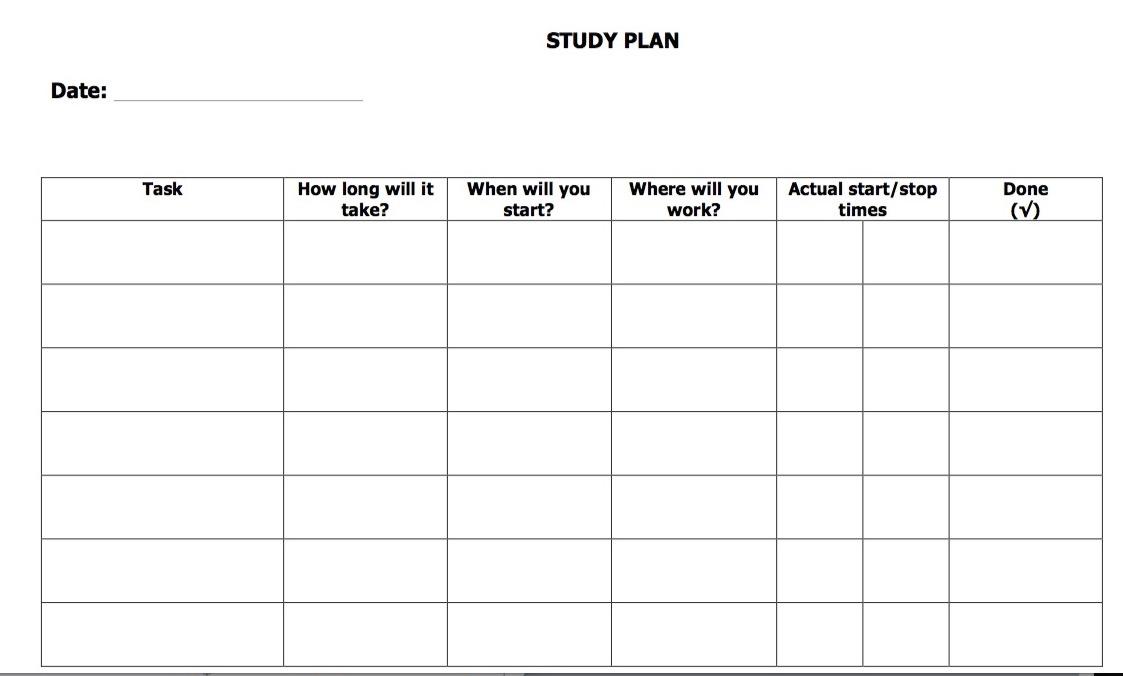
§ Keep the teaching task brief.
§ Talk to students about the strategies they use to make themselves get started on things they don’t want to do
§ Help students figure out why they’re procrastinating and come up with a strategy to overcome the barrier
4/27/23 13
Solving the Procrastination Problem


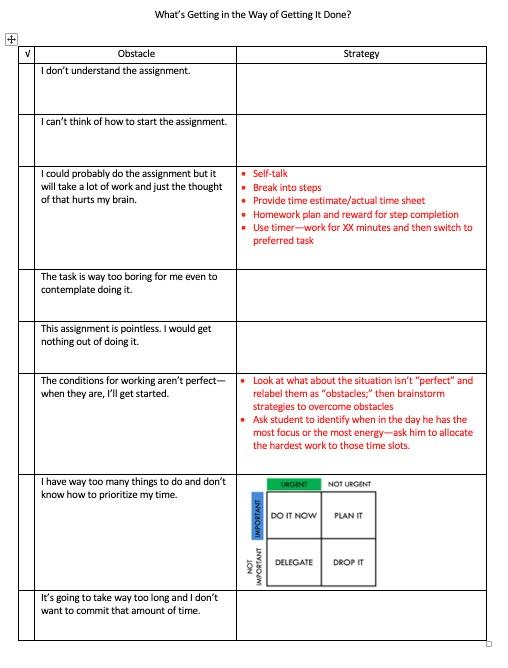
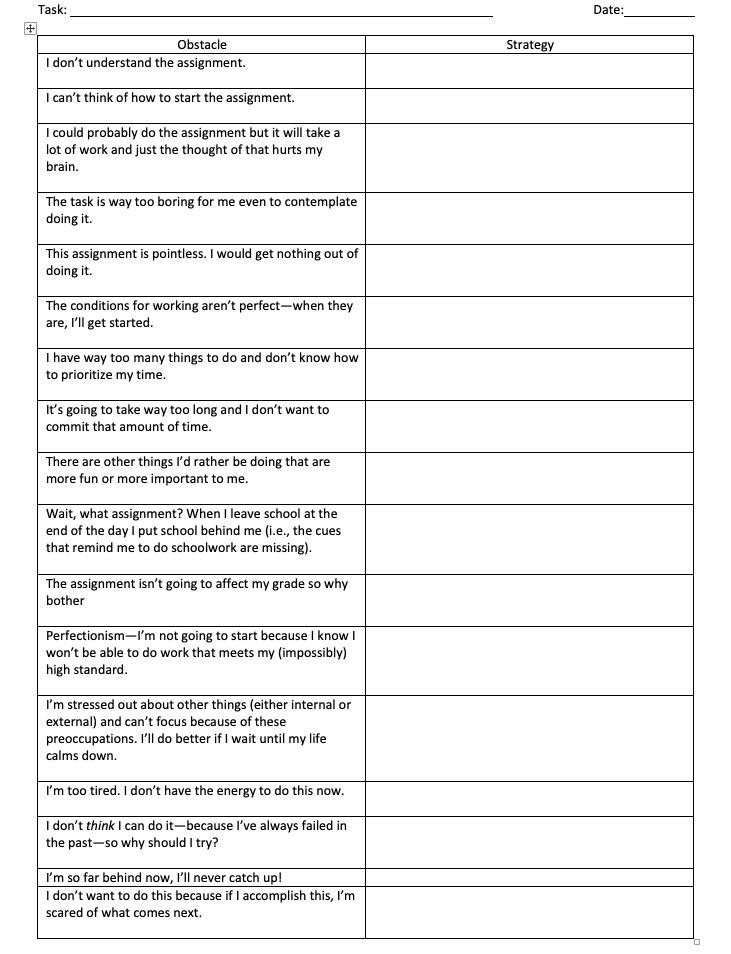
4/27/23 14
Consider this...
Scott has trouble getting seatwork done in the time he is given. Writing assignments are particularly challenging. He stares at his paper for a long time, and even after the teacher prompts him to get to work, he still struggles. When the writing period is over, he’s lucky if he’s got two sentences on his paper, when the rest of the class seem to write two paragraphs easily.
§ What executive skills might be challenging for Scott?
§ If you were working with Scott’s teacher, what suggestions might you make?
Planning/Prioritizing
The ability to create a roadmap to reach a goal or to complete a task. It also involves being able to make decisions about what’s important to focus on and what’s not important.
Planning/Prioritizing
§ Give kids models (note-taking, practice tests)
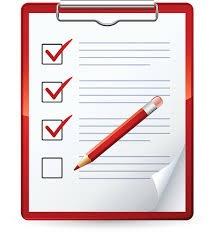
§ Instead of doing the planning for kids, plan with kids
§ Teach students to plan using templates
4/27/23 15
Organization
The ability to create and maintain systems to keep track of information or materials.
Organization
§ Create systems of organization (notebooks, desk, classroom)
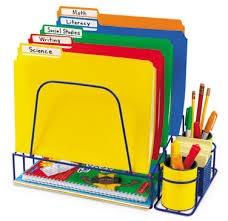
§ Explicitly teach those systems
§ Supervise students to make sure they use those systems
Time Management
The capacity to estimate how much time one has, how to allocate it, and how to stay within time limits and deadlines. It also involves a sense that time is important.
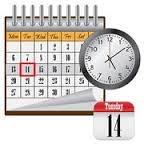
4/27/23 16
Consider this...
Julie attends a middle school committed to project- based learning. She loves being able to explore topics of interest to her, but she invariably scrambles to meet deadlines. She has great ideas but has trouble translating those ideas into a product that meets the teacher’s expectations. The night before the project is due features meltdowns that put the whole family on edge.
§ What executive skills might be challenging for Julie?
§ If you were working with Julie, what suggestions might you make to her parents or teachers?
Goal-Directed Persistence

The capacity to have a goal, follow through to the completion of the goal and not be put off or distracted by competing interests.

4/27/23 17
Metacognition
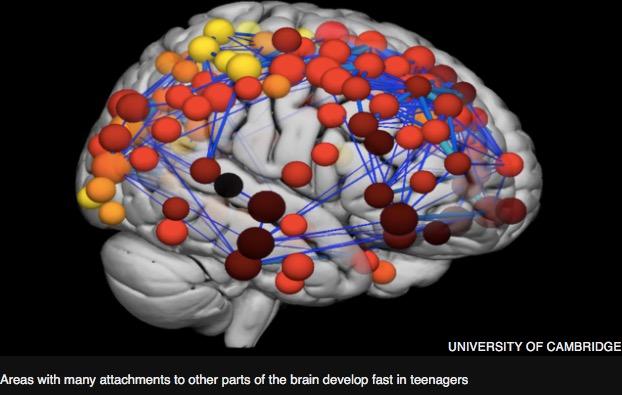
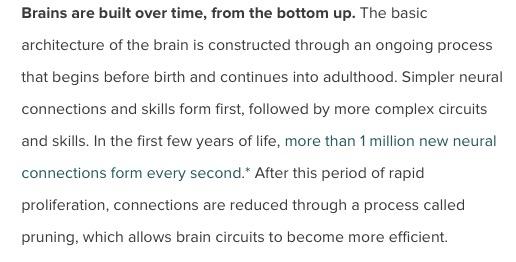
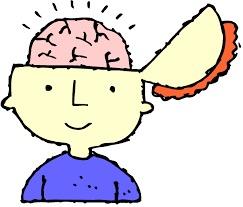
The ability to stand back and take a birds-eye view of oneself in a situation. It is an ability to observe how you problem solve. It also includes self-monitoring and selfevaluative skills (e.g., asking yourself, “How am I doing? or How did I do?”).
How does “pruning” affect executive skill development?
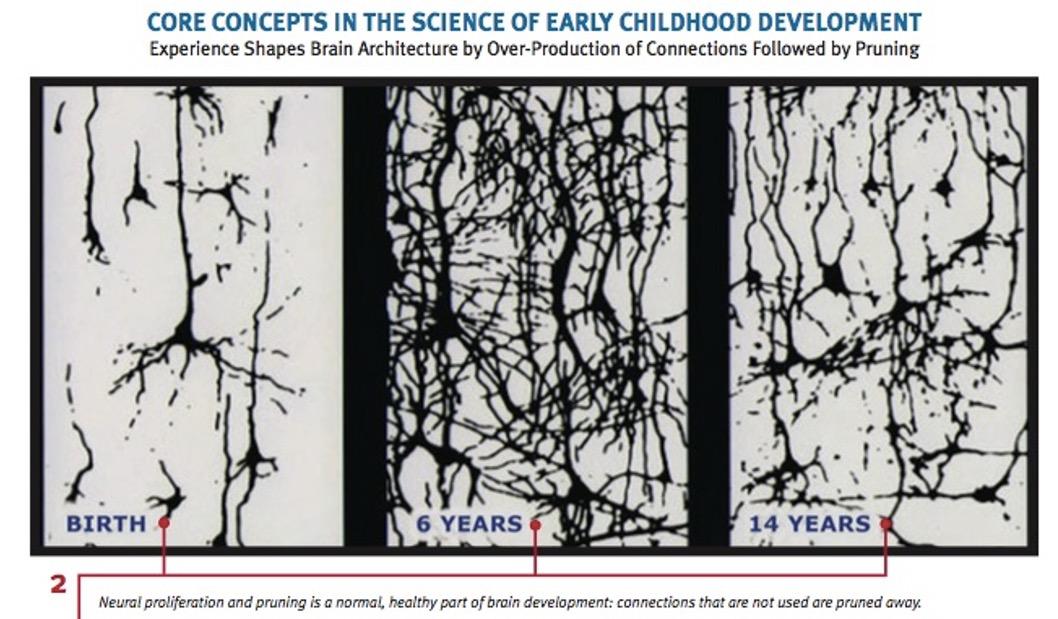
4/27/23 19
Use Self-Reflections to Encourage Metacognition
Consider this...
Mark is an 8 th grader who is always in danger of failing at least one class each marking period (and the class may change from term to term). He plans to go to college but when his parents get on his case, his typical answer is, “8 th grade doesn’t count. I’ll work harder next year when it matters.” His parents feel like they have to micromanage him just to make sure he passes all his classes.
§ What executive skills might be challenging for Mark?
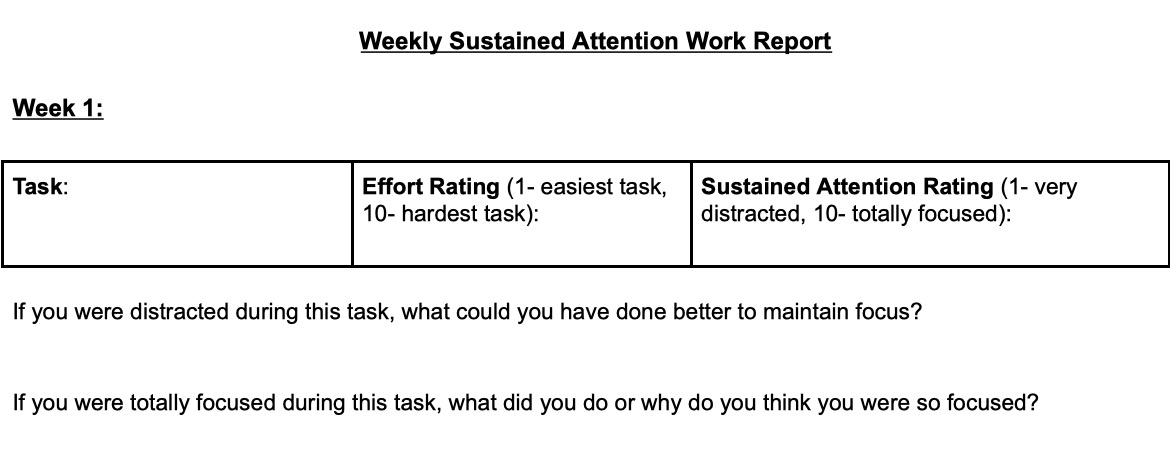
§ If you were working with Mark, what suggestions might you make to his parents?
Where in the brain are executive skills located?
In the frontal lobes (just behind the forehead)
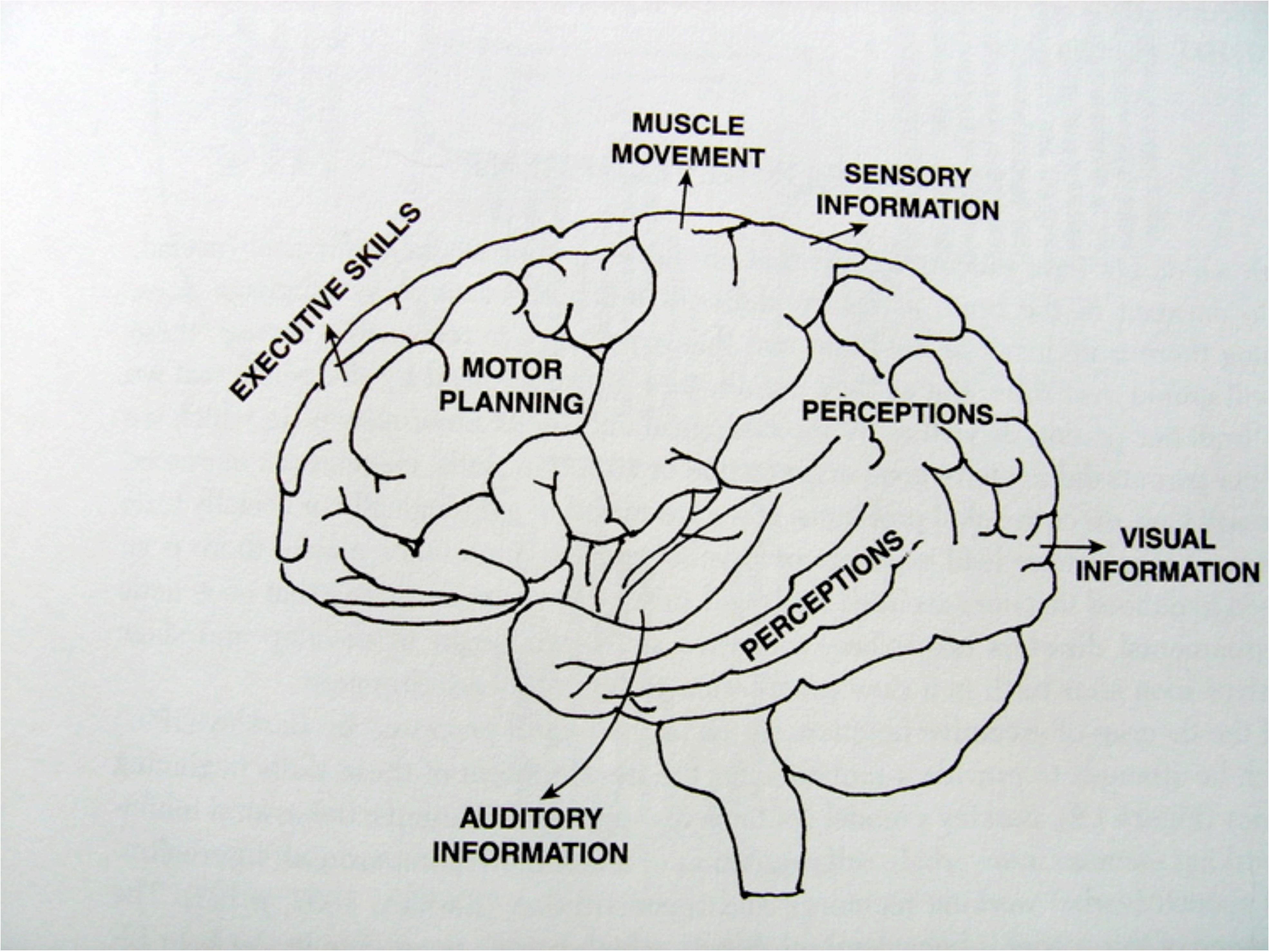
4/27/23 20
And let’s consider ADHD
Experts maintain that kids with ADHD lag about 30% behind typically developing peers in terms of executive skills.
Stop and do the math: at your grade level, a student with ADHD is functioning at what age level?
What’s going on in the brains of kids with ADHD that contributes to their problems in school?


4/27/23 21
Biological underpinnings of ADHD
A study published by the Journal of the American Medical Association (JAMA) has found differences in dopamine processing in the reward pathways in the brains of subjects with ADHD compared to non-ADHD controls. The study focused on the nucleus accumbens (a brain structure involved with reinforcement and reward) and suggests that people with ADHD may release dopamine at a lower rate compared to normal controls or might have a net dopamine deficit.
Biological underpinnings
Because dopamine enhances the level of interest a person attaches to a stimulus, people who release dopamine at a lower rate might find it more difficult to work up the enthusiasm to act on stimuli they don’t find naturally appealing.
Implication: students with ADHD find it much more difficult to apply themselves to tasks that are not intrinsically interesting to them.
Ways to Build Movement into the School Day
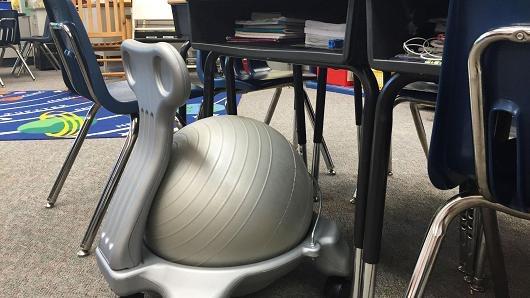
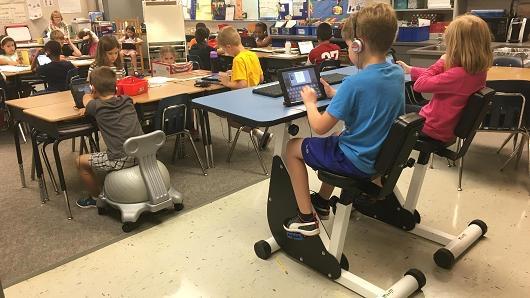
4/27/23 22
How do executive skills develop?
Another idea… Forest Classrooms Deerfield, New Hampshire
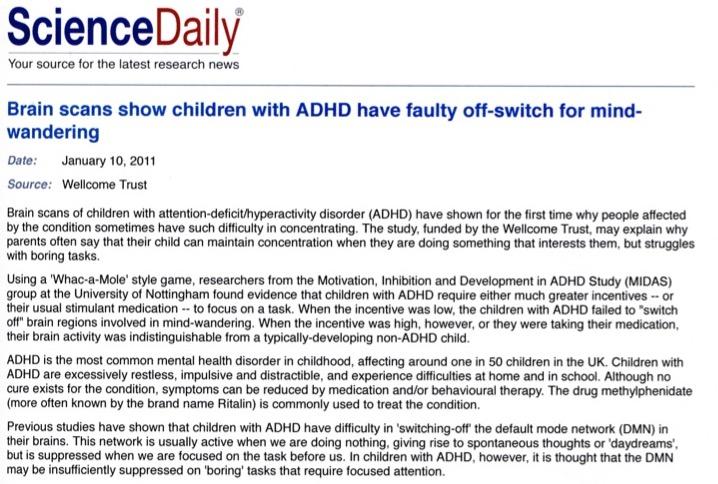

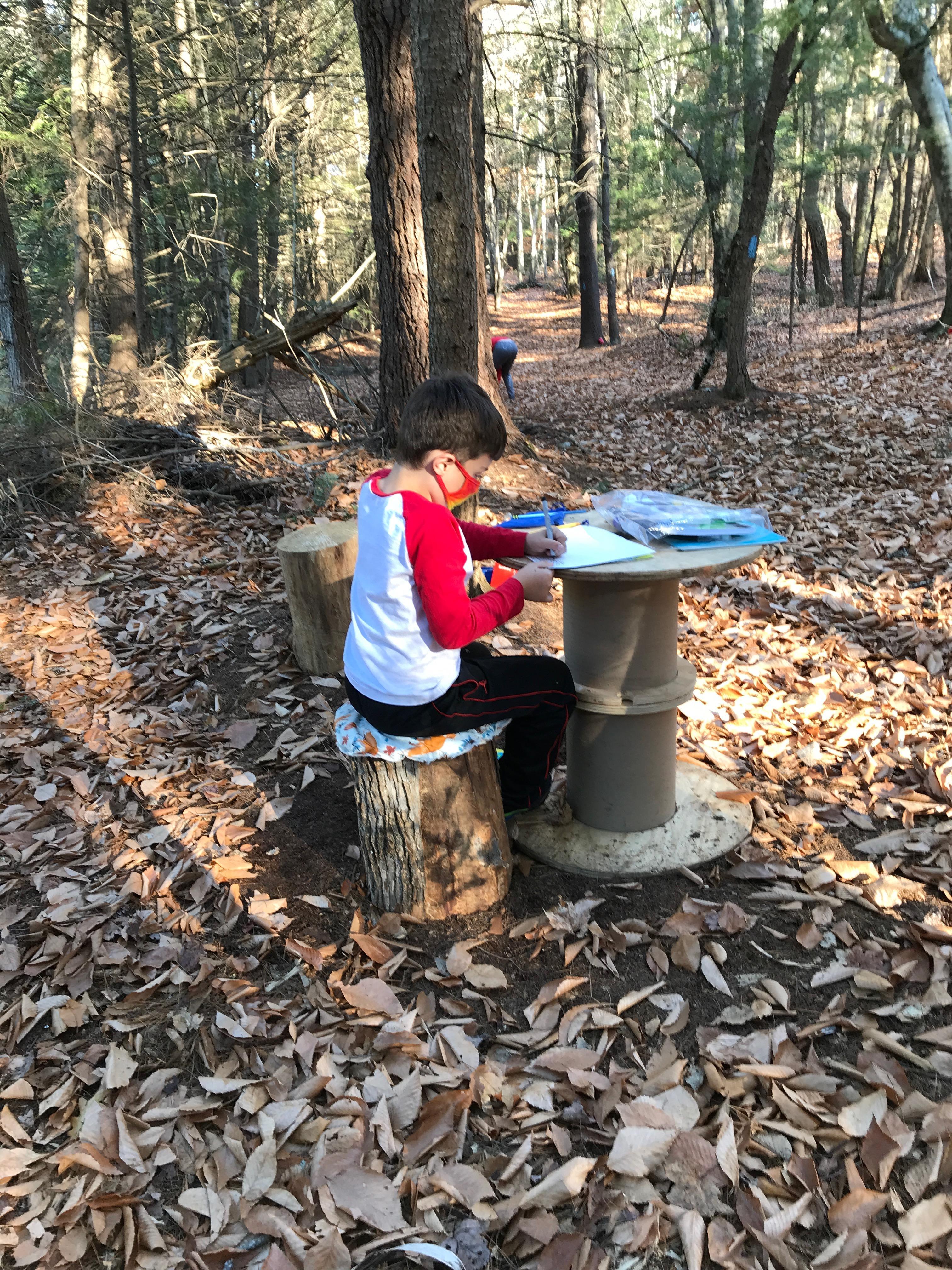

Through a process called myelination. Myelin acts as insulation, increasing the speed with which nerve impulses are transmitted. The faster the impulse, the better the skill.
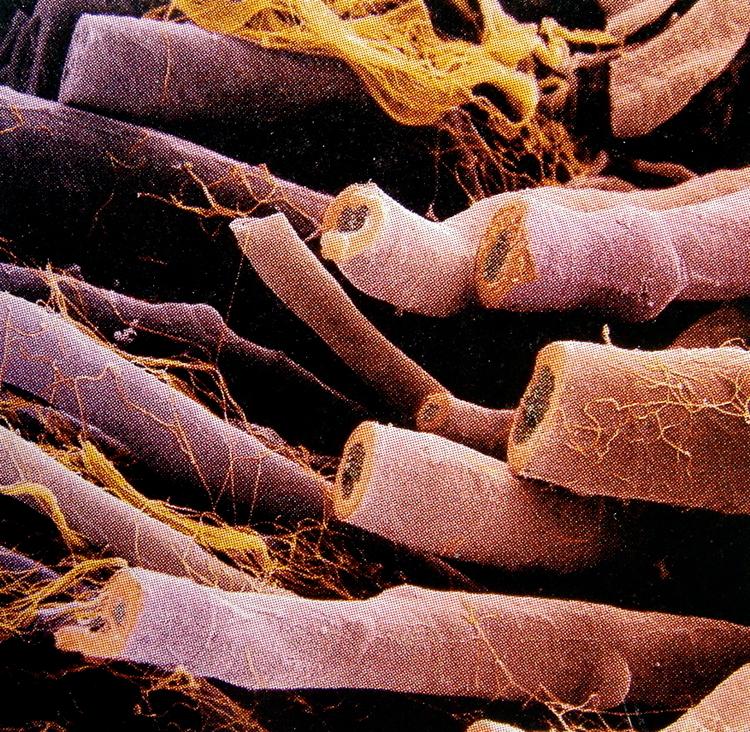
4/27/23 23
For more information: A Forest Days Handbook: Program Design for School Days Outside by Minnuchi and Teachout (2018).
Myelin performs 2 functions

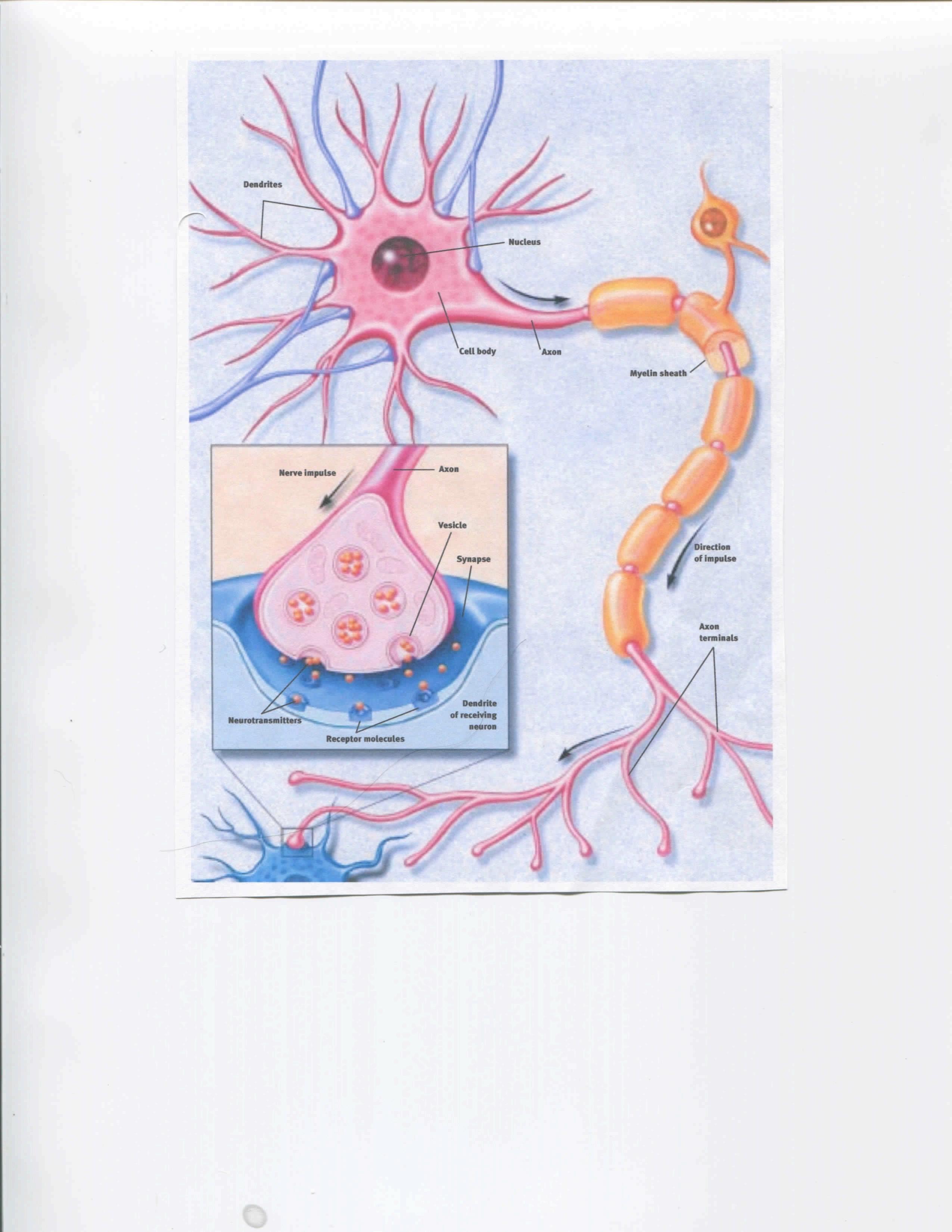
§ Increases the speed with which nerve cells fire. Decreases the recovery time, enabling the nerve cell to fire again quickly. The result: a 3,000 fold increase in the amount of information transmitted per second.
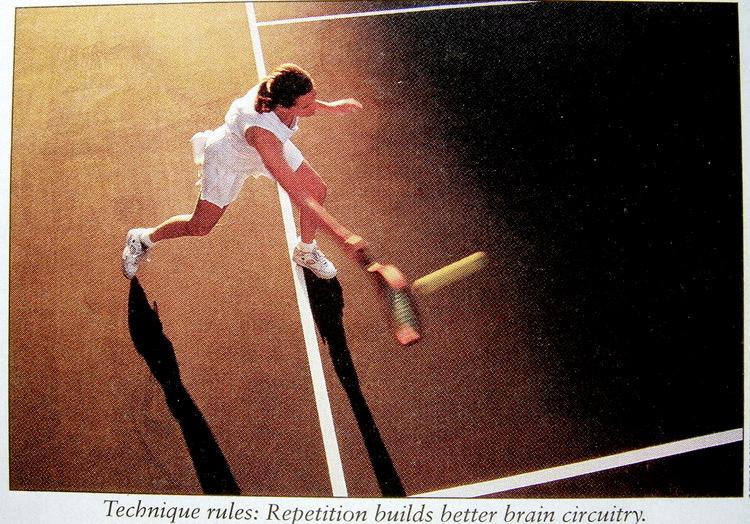
All skills, including executive skills, improve with practice…
The more you practice, the better the skill. Practice also makes the task less effortful.
4/27/23 24
ASSESSMENT PROCEDURES
• Parent and teacher interviews
• Behavior rating scales
• Formal assessment
• Behavior observations
• Informal assessment
ASSESSMENT OF EXECUTIVE SKILLS
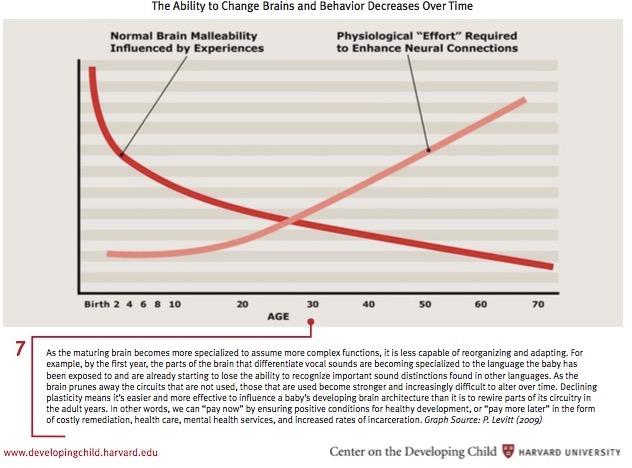
Behavior Rating Scales
Child Behavior Checklist/Teacher Report Form. (ASEBA.org)
Behavior Rating Inventory of Executive Function-2 (BRIEF-2). Available from PAR (parinc.com).
ADHD Rating Scales-V. (guilford.com)
§ Brown ADD/Executive Function Scales.(pearsonclinical.com)
4/27/23 25
ASSESSING EXECUTIVE SKILLS
Informal Measures
Parent interview (look for specific examples of problems in areas likely to be affected by executive skill deficits, including problems with homework, chores, following directions, social interactions, organizational skills, etc.).
Teacher interviews (again, look for specificity of examples in relevant areas, e.g., following complex directions, task initiation, handling long-term assignments, response to open-ended tasks, social interactions, responses to classroom/school rules, etc.).


4/27/23 26
STUDENT INTERVIEW EXCERPT: HOMEWORK: I m going to ask you some questions about homework and the kinds of problems kids sometimes have with homework. Please tell me if you think these are problems for you. I may ask you to give me examples. Item Not a problem Notes
Getting started on homework (TI). Related questions: What makes it hard? When is the best time to do homework? Are some subjects harder to start than others?
Sticking with it long enough to get it done (SA). Related questions: Is this worse with some subjects than others? What do you say to yourself that either leads you to give up or stick with it? Does the length of the assignment make a difference in your ability to stick with it?
HOMEWORK (continued)
Item Not a problem Notes
Remembering assignments (WM). Related questions: Do you have trouble remembering to write down assignments, bring home necessary materials, or hand in assignments? Do you lose things necessary to complete the task?
Becoming distracted while doing homework (SA). Related questions: What kids of things distract you? Have you found places to study that minimize distractions? How do you handle distractions when they come up?
Limitations of Formal Assessment
Feature Executive skill affected
Task initiation
Examiner cues child to begin
Tasks are brief Sustained attention
Examinerʼ s presence communicates that performance is being monitored
Most standardized tests involve closed-ended tasks (i.e., 1 correct answer)
Task initiation, sustained attention, goal-directed persistence
Flexibility, metacognition
4/27/23 27
Limitations of Formal Assessment
The most complex cognitive task within any psychologist’s repertoire is less complex than real world demands on executive skills, and there is no way of determining with any certainty how well these tests map on to the real world.
Thus, in the parlance of neuropsychologists, absence of evidence is not evidence of absence.
How we used to describe these kids…

A better way…
Instead of calling students this:
Lazy
Unmotivated
Not working to potential
Disruptive
• Oppositional
Messy
• Tardy
Forgetful
Absent-minded
Lacking a work ethic
Describe them as having challenges in this:
Task initiation
Sustained attention
Response inhibition
Emotional control
• Flexibility
Organization
• Time management
Working memory
Goal-directed persistence
4/27/23 28
Activity: MATCH SKILLS TO BEHAVIORAL DESCRIPTORS
ONE EXAMPLE OF A STRENGTH AND ONE EXAMPLE OF A CHALLENGE FOR EACH OF THE 11 EXECUTIVE SKILLS
5 Steps for Embedding Executive Skills into Classroom Lessons and Throughout the School Day
Steps to Follow
1.Familiarize yourself with what executive skills are and how they impact learning.

4/27/23 29
√
Steps to Follow
2.Learn to apply the executive skill terminology to student learning and behavior.
Can you spot the executive skills in this conversation?
§ Response Inhibition
§ Working Memory
Emotional Control Flexibility
Sustained Attention
§ Task Initiation
Planning/Prioritizing
§ Organization
Time Management
§ Goal- Directed Persistence
§ Metacognition
Steps to Follow
3.Introduce to students the vocabulary and concepts of executive skills.
Use “superheroes” (http://efs2therescue.com ) or weekly lessons (Train Your Brain folder in Dropbox )
§ www.efintheclassroom.net (Mountain View)
My YouTube channel (Rachael Ramsey) https://drive.google.com/drive/folders/0B4kId0327lZdb3NBaWlrSkxxejQ?res
ourcekey=0 - AsEWT4RrqkD9LgAkr8i_jw&usp=sharing (Bedford ES materials)

4/27/23 30
√
Montcrest School Key Elements
§ Started with a small study group
§ Whole school participation in design and implementation
§ Use of super heroes to introduce each skill (available at http://efs2therescue.com )
Emphasis on strategies, with options posted in classroom
§ Included in report card, with self- assessment for older students
Mountain View School
Key
Elements
§ Started with a small study group
§ Piloted with small group of teachers
§ Thirty-minute mini-lesson on Monday
§ Focus for the week*
§ Friday re-visit
§ 12/13 weeks for all lessons
§ Within 3 years, adopted by the entire school
www.efintheclassroom.net (Mountain View)
4/27/23 31
Ways to Give Students the Terminology and Concepts of Executive Skills: Classroom
Steps to Follow
4. Find ways to illuminate where in a student’s life at home and at school executive skills present themselves and give students the opportunity to make these connections on their own.


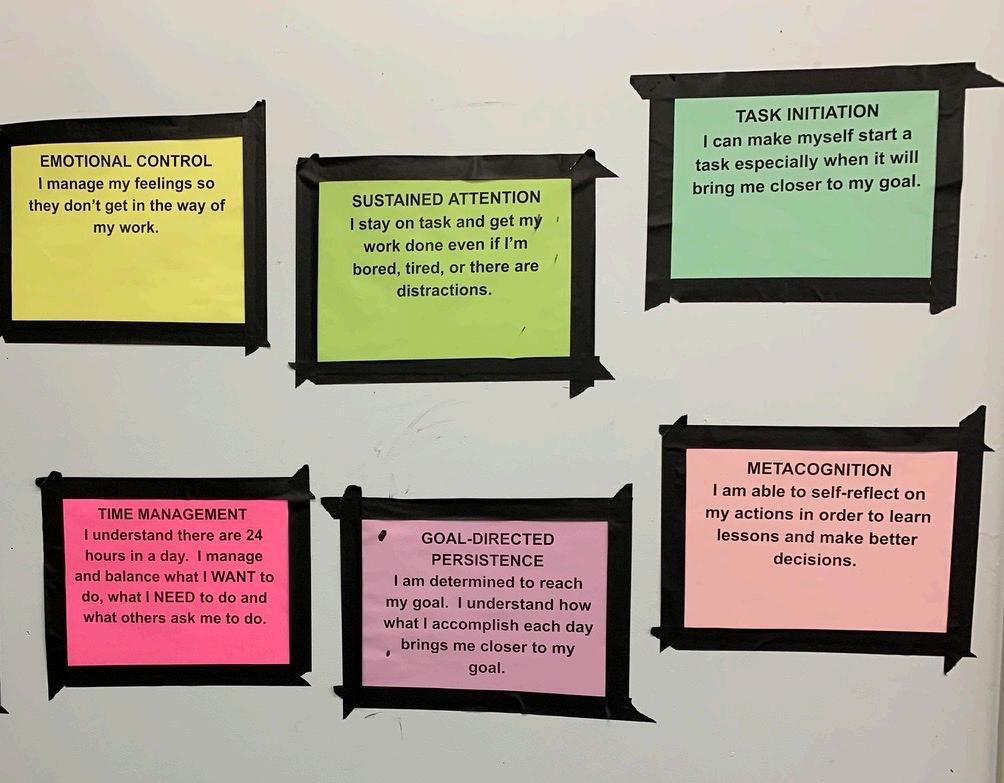
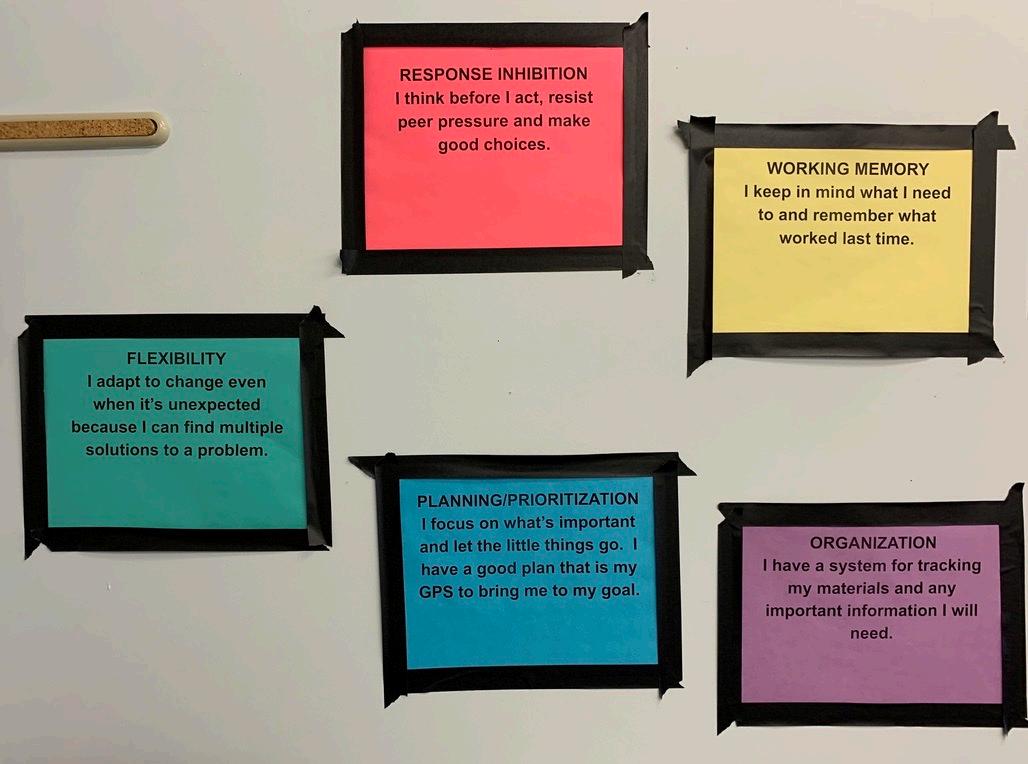
4/27/23 32
Posters Walter Fitzgerald School, Fairfield CT
conversations
Posters can spark
Classroom lessons Independent seatwork In the cafeteria In the hallways § On the school bus Playing sports With friends After-school or summer jobs Doing homework Other situations at home (e.g., chores, getting along with parents or siblings)
Steps to Follow
5. Incorporate executive skills into daily routines, lessons, classwork, and homework assignments. Be explicit with students about how the skill contributes to mastery of content and how they can identify strategies to overcome obstacles that may get in the way of using those skills effectively.
Teach the skill directly and have students practice it
Example: teaching students to pay attention

Embed Executive Skills in Classroom Lessons
Describe
Decide on
With
Identify Identify potential obstacles that might prevent the student from using those skills effectively. decide on a strategy to
student,
4/27/23 33
Describe the lesson being taught.
Identify Identify the executive skills the lesson requires students to use. the
use to overcome the obstacle.
Examples
Clinical/Behavioral Examples
ACTIVITY
Try out this process with a classroom lesson or a clinical problem situation
4/27/23 34
Lesson/ Assignment Executive Skill(s) Obstacle Strategy Math Subtraction with Regrouping Organization Working Memory Poor spacing/messy handwriting • Forgetting steps Use large grid graph paper Use checklist with each step numbered or color- coded English Learning Vocabulary Words Working Memory Metacognition Difficulty retaining meanings (ineffective study habits) Make up “silly sentences” for each word Use flash cardsword on side 1, definition with cartoon drawing on side 2
Problem Situation Executive Skill(s) Obstacle Strategy Fighting with older brother Emotional control Response inhibition Brother ”pushes her buttons” Plays video games instead of doing homework Response inhibition Task initiation Can’t say no when friends ask him to play Can’t stop once he’s started playing
Making homework plans
Embed Executive Skills in Classroom

Routines: 3 examples
Bringing home necessary materials at the end of the day
Remembering to hand in homework
Teaching children to make homework plans

If this is more than you want to do, try this
Ask kids to write down what time they’re going to do the homework assignment and where they will do it… On the assignment itself, or

In their assignment book, or
As an alarm in their smart phone

4/27/23 35
Embed Executive Skills in Classroom Routines
Embedding Executive Skills in Classroom Routines
Peg’s Take on the “Perfect” Intervention for Executive Skills
The perfect intervention to support executive skill development is one § that takes no more than 5-10 minutes a day § and that you’re willing to do forever (or as long as it takes).
4/27/23 36
Problem situation Executive Skill(s) Routine Estimated time required Students forgetting to bring home homework materials Working memory Organization List items on board that students need to bring home; pair them off so each student makes sure their partner has everything they need 5 - 10 minutes
Problem situation Executive Skill(s) Routine Est. time required Students forgetting to hand in homework Working memory Stand by door at end of class and accept completed homework. 3-5 minutes
ACTIVITY:
Design a classroom routine that takes no more than 5-10 minutes a day or 15 minutes once a week.
There are 3 primary ways parents and teachers can help kids with weak executive skills:
Change the environment to reduce the impact of weak executive skills.
Teach the youngster executive skills.
Move from external to internal: critical dimensions
EXTERNAL INTERNAL
CHANGE CHANGE
ENVIRONMENT CHILD
EXTERNAL CUE

Use incentives to get youngsters to use skills that are hard for them. 111
SELF-CUE
4/27/23 37
Begin by modifying the environment
What do we mean by “modify the environment?”
Environmental modifications are any changes we make that are external to the child.
Ways to modify the environment
Who benefits from environmental modifications?
Kids with ASD
Typical school environments/demands often overwhelm these kids. Use their behavior as a barometer to tell you when you have to make modifications. Meltdowns and tantrums are the most obvious cues.
4/27/23 38
Change the physical or social environment 1 Modify the tasks we expect children to perform 2 Change the way adults interact with kids. 3
Environmental Modifications for Kids with ASD
§ Alternatives to high stim - environments (e.g., cafeteria, playground)
§ Build social interactions that work for them (e.g., structured settings where the activity drives the interaction or supervised lunch/recess)
§ Closed - ended tasks/minimize choice; provide scripts; make steps more explicit; alternate between preferred/non - preferred activities ( First work, then play ).
Open-Ended Tasks
An open-ended task is one where:
• There are multiple possible correct answers;
• There are multiple possible ways to achieve the correct answer;
• The task has no obvious starting point; or
• The task provides no feedback about whether or when it is complete.
Make steps more explicit
Example: Math problem solving
Steps for Problem Solving using Model Drawing - Possible Scoring (Singapore Math)
_______ Reads the entire problem and underlines the question. (1pt.)
_______ Rewrites the question in sentence form, leaving a space for the answer. (1)
_______ Determines who and/or what is involved in the problem. (1)
_______ Draws the unit bar(s). (1)
_______ Chunks the problem and adjusts the unit bars to match the information in the problem.
_______ Fills in the question mark? (3)
_______ Correctly computes and solves the problem. (2)
_______ Writes the answer in the blank in the sentence. (1)
4/27/23 39
2 end-of-day routines
The numbered items are the steps created for a child on the autism spectrum. The items with checkmarks are those a general education teacher would use with her class. Children on the spectrum need the steps spelled out more explicitly.
Make steps more explicit Example: How to listen
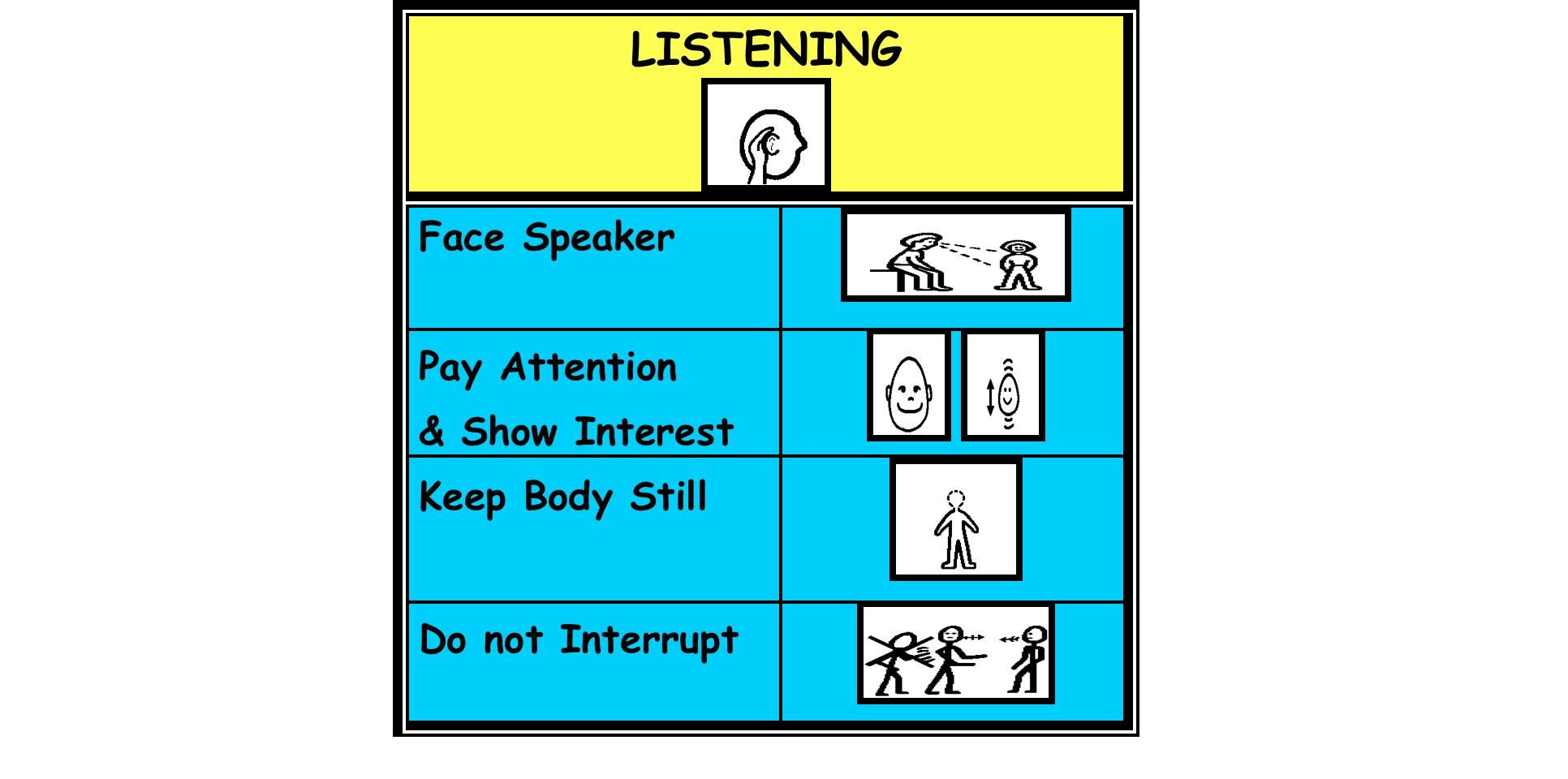
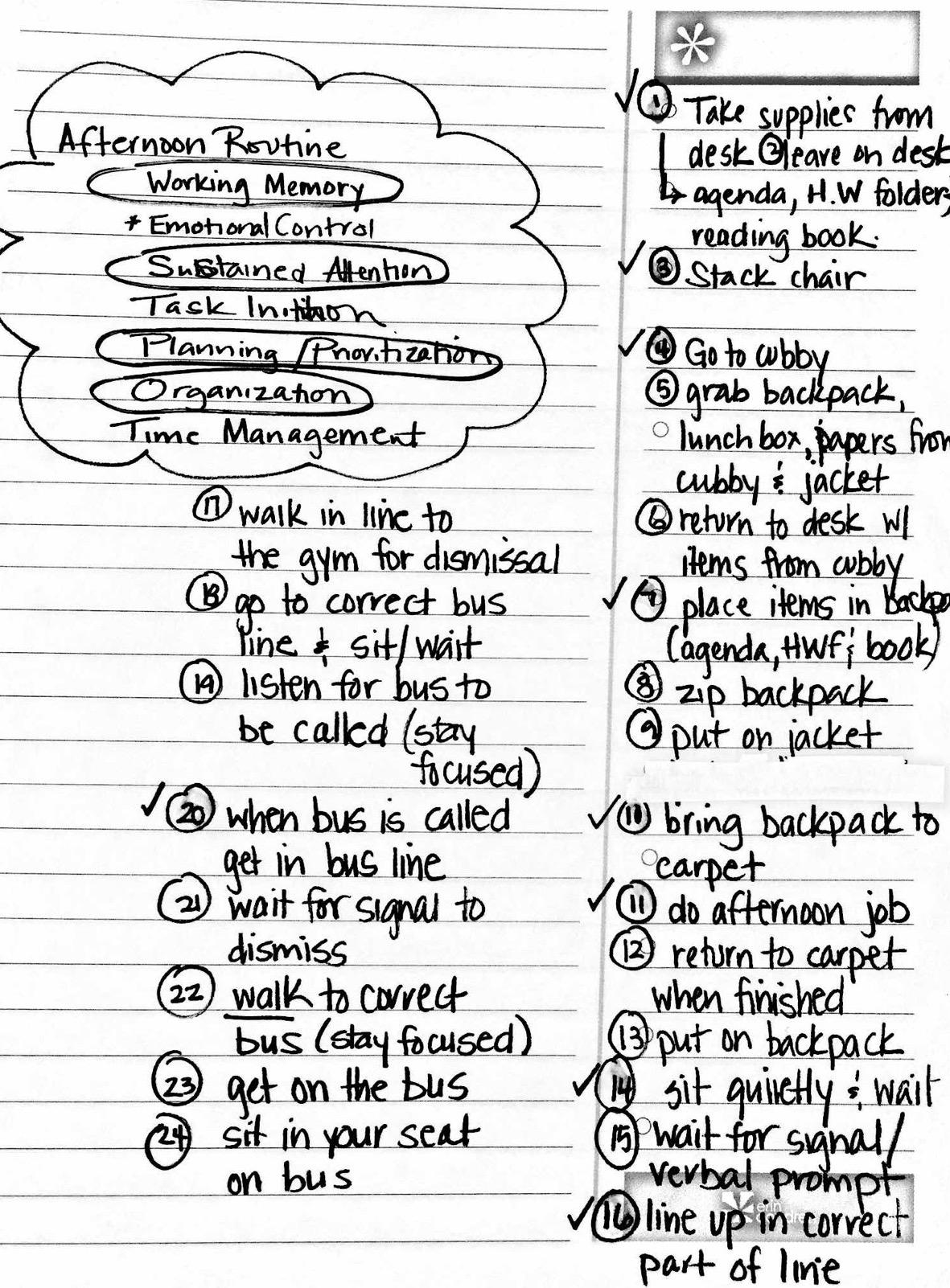
Who benefits from environmental modifications?
Kids with ADHD
If you make kids with ADHD sit still or remain seated for long periods of time, their ability to learn diminishes. Kids with ADHD often receive more negative feedback from both peers and adults than their peers do.
4/27/23 40
“When a parent or a teacher sees a child who can sit perfectly still in one condition and yet over here they’re all over the place, the first thing they say is, ‘Well, they could sit still if they wanted to,’” said Mark Rapport, director of the Children’s Learning Clinic at the University of Central Florida. “But kids with ADHD only need to move when they are accessing their brain’s executive functions. That movement helps them maintain alertness.”
https://www.youtube.com/watch?v=167se17RN Hw
Environmental Modifications for Kids with ADHD
§ Seating arrangements; classroom design
§ Short tasks or build in frequent breaks; give kids choice or responsibility; minimize worksheets; provide cues/reminders; use checklists (with rewards)
§ Increase supervision (unstructured situations)
§ Work for a ratio of 3:1 positives to corrective feedback
Effective Praise:
1. Is delivered immediately after the display of positive behavior;
2. specifies the particulars of the accomplishment (e.g., Thank you for cleaning off your desk right away after I asked you);
3. provides information to the child about the value of the accomplishment (e.g., When you get ready for the first activity quickly, it makes the morning go so smoothly!);
4. lets the child know that he put in effort to accomplish the task (e.g., I saw you working hard to control your temper!); and
5. orients the child to better appreciate their own taskrelated behavior and thinking about problem-solving (e.g., I like the way you thought about that and figured out a good solution to the problem).
4/27/23 41
The formula for teaching executive skills
1. Embed the skill in a daily routine
2. List the steps in the routine

3. Walk the child through the steps repeatedly
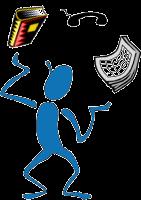
4. Create a visual that outlines the routine
5. Fade the prompts by having the child use the visual to follow the routine













































































